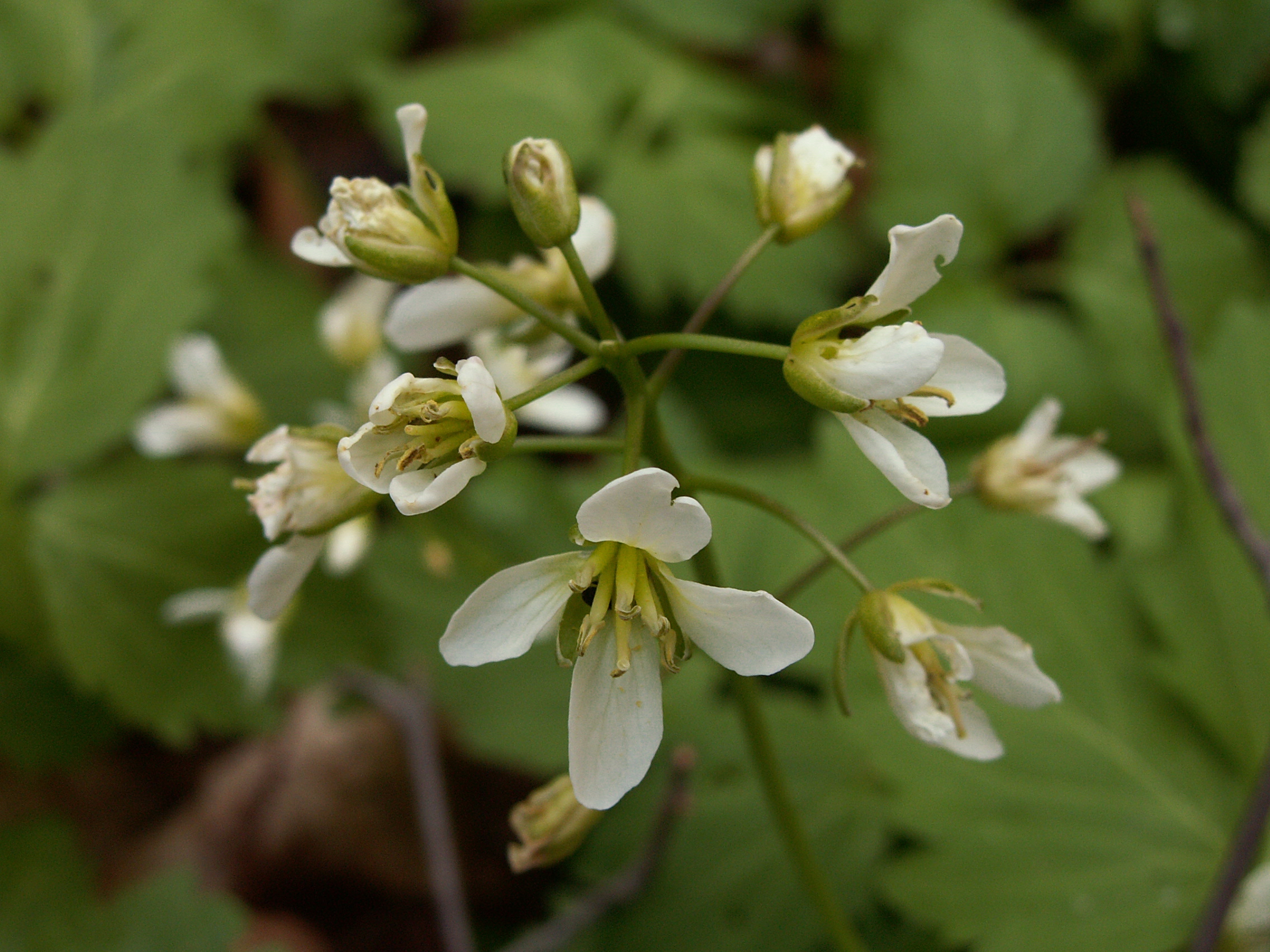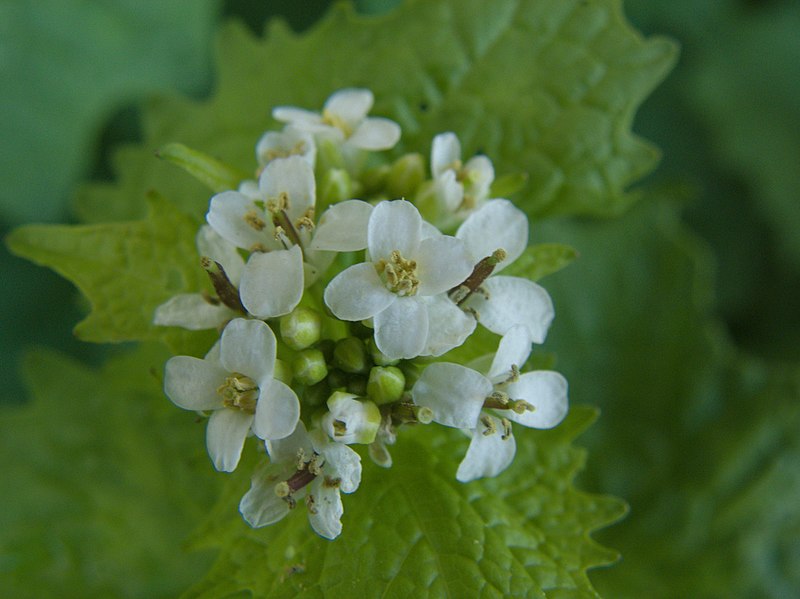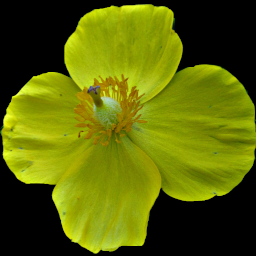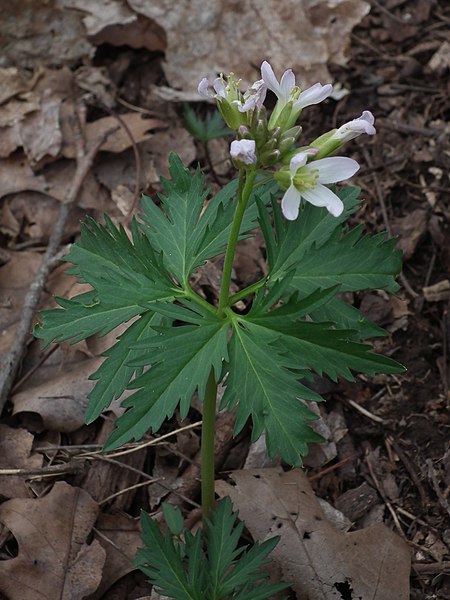
Just as the Cut-Leaf Toothworts (C. concatenata) are winding down, the Broadleaf Toothworts open up. They are not as common as the Cut-Leaf Toothworts, but they like the same wooded hillsides, especially in stream valleys. Broad-Leaf Toothwort is easily distinguished by its two leaves with three broad leaflets each (C. concatenata has three leaves with very narrow lobes). These plants were blooming in early May near the Trillium Trail in Fox Chapel.
Gray lists this as Dentaria diphylla. He describes the genus and the species thus:
DENTARIA [Tourn.] L. TOOTHWORT. PEPPER-ROOT. Pod lanceolate, flat. Style elongated. Seeds in one row, wingless, the funiculus broad and flat. Cotyledons petioled, thick, very unequal, their margins somewhat infolding each other. —Perennials, of damp woodlands, with long fleshy sometimes interrupted scaly or toothed rootstocks, of a pleasant pungent taste; steins leafless below, bearing 2 or 3 petioled compound leaves about or above the middle, and terminated by a corymb or short raceme of large white or purple flowers. (Name from dens, a tooth.)
D. diphylla Michx. Rootstock long and continuous, often branched, the annual segments slightly or not at all tapering at the ends; stems in anthesis 1.5-3 dm. high, stoutish; leaves 3-foliolate, the basal and cauline similar, the latter 2 (rarely 3), opposite or subopposite, leaflets 4-10 cm. long, short-petiolulate, rhombic-ovate or oblong-ovate, coarsely crenate, the teeth bluntly mucronate; flowers white; sepals 5-8 mm. long, half the length of the petals; pods rarely maturing. Rich woods and thickets, e. Que. to s. Ont. and Minn., s. to S.C. and Ky. Apr., May. Rootstocks 2-3 dm. long, crisp, tasting like Water Cress.















